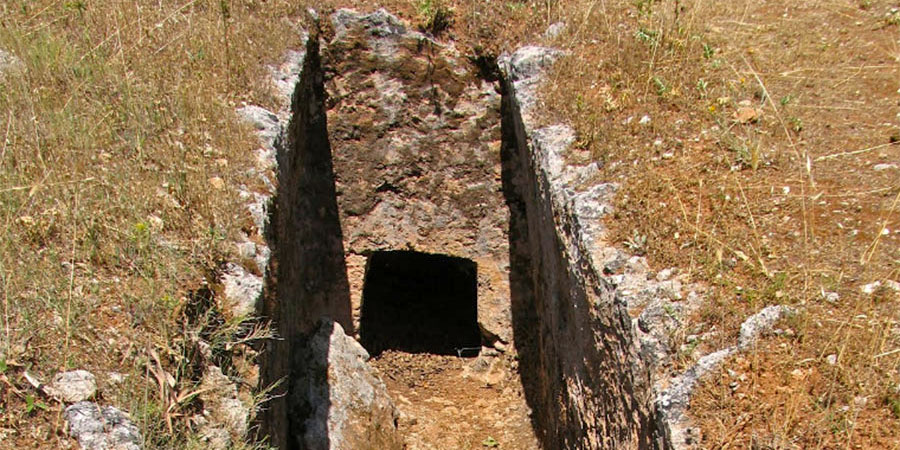This archaeological site, where an extensive Minoan cemetery of the Postpalatial period was discovered, is located a little before the village of Armeni, 8 kilometres after Rethymnon, on the way to Spili, amongst tall oaks.

More than 200 chamber tombs and a built tholos tomb were unearthed, which survive in a very good condition, due to the fact that they were hewn into hard rock. A network of a main path and several smaller ones used to run through the cemetery.
Most of the tombs had a dromos (inclined passageway cut into rock) which lead down to the main burial chamber. These dromoi were usually quite long, carved deeply into the rock; here, however, in several cases they were quite short. In some tombs there were a few steps that led down to the dromos; in other tombs, there were only a few steps that led straight from ground level to the burial chamber, with no dromos in between.
The entrance to the burial chamber had hewn pilasters, lintel and threshold, and were blocked by large stone slabs. The main chambers might be circular, or semi-circular, or rectangular-shaped, or were even simple cavities. The chambers of the largest tombs had a carved square-shaped column in the middle of the room and benches along the walls.
Clay sarcophagi were used for the burials; cavities in the dromos walls or in the chamber floor were also used for that purpose. Gravesteles were positioned over the two largest tombs.
Clay larnakes(some of which decorated with double axes, horns of consecration, hunting scenesand bulls), as well as 500 skeletons, are counted among the most remarkable finds.
These skeletons provided us with valuable information concerning the physical appearance and the health of the Minoans, who appear to have had a diet rich in carbohydrates, with limited meat consumption.
The area is 15 minutes away from Rethymnon, and there are adequate road signs to show the way. The cemetery is open to visitors.



